Introduction to Zouni
Celebrating your new year with Japanese dishes? This dish is the most auspicious dish that the Japanese eat during New Year’s Day. Zouni is a Japanese dish consisting mainly of mochi and seasoned with soy sauce and miso. It is one of the soup dishes in the world. In Japan, locals eat this a lot on New Year’s Day, and there are differences between regions and families. There are also other ingredients that the Japanese uses during New Year’s Day, such as kamaboko and kurikinton. As we go along with this article, you will learn everything about Zouni.
Etymology
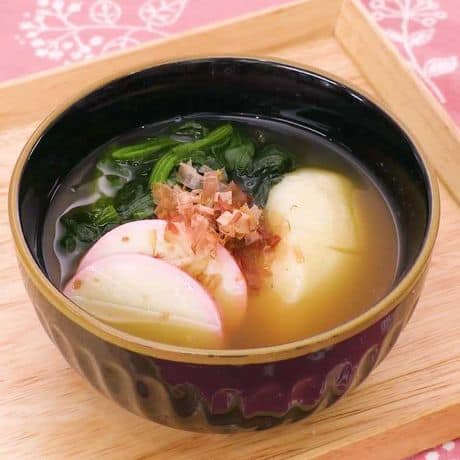
The word “Zouni” uses two kanji characters. Since the first character, “雑” means “miscellaneous” or “mixed”. While the second, “煮” means “simmer” or “boil”, many thought that the word derives from the fact that zouni consists of many boiled miscellaneous items of food (such as mochi, vegetables, and seafood).
What is Zouni?

Zouni (雑煮) is a traditional Japanese food consisting of mochi, soy sauce, and miso. It is a Japanese soup containing mochi rice cakes. It is an important food the Japanese serve every New Year’s Day along with a traditional new year dish called Osechi, an assortment of colorful dishes packed together in special boxes. Locals offered this dish to the gods in a ceremony on New Year’s Eve. The preparation of zouni varies both by household and region. It has numerous regional variations in Japan including its mochi or rice cakes. Japanese believe that God’s Spirit dwells inside the mochi in Zouni.
History of Zouni
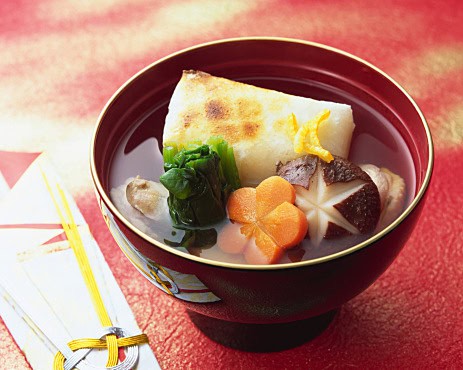
The history of Zouni or Ozouni, a traditional New Year’s soup, can be traced back to the Heian dynasty (794-1185). The mochi (rice cakes) used in the zouni has long been a dish farmer consumed on “hare,” or sunny days or special events. According to history, zouni began when these farmers prepared rice cakes, taro, carrots, radish, and other vegetables as an offering to the gods at the start of the year. Locals serves ozouni at auspicious occasions by the Muromachi period (1333-1573), indicating that it had progressively become a part of Japanese culture through time.
Variations of Ingredients
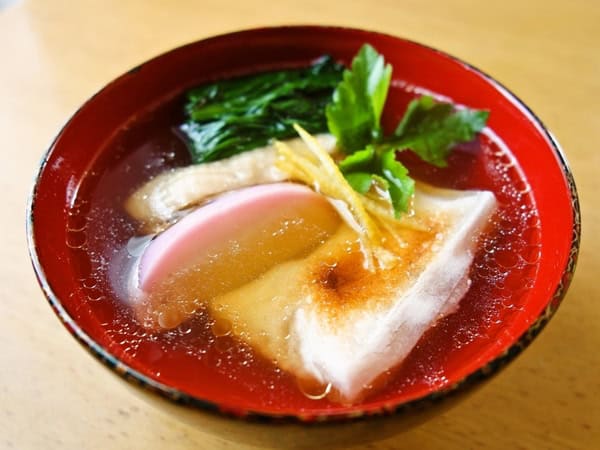
Types of Stock or Soup
Sumashi-jiru is the most frequent type of zouni in western Japan (excluding the Kinki region) and the Kanto region. Sumashi-jiru, also known as Osumashi, is a clear soup cooked with Dashi soup stock and seasoned primarily with soy sauce and salt. Because Tokyo is a cultural melting pot, the Kanto-styled Sumashi-jiru zouni are slightly distinct even inside the city. A piece of nori (seaweed) is on top of the zouni in Shinagawa and Ota wards. On the other hand, a kinpira burdock is also on top of Kanto-style zouni in Saitama Prefecture, and a variety of seaweed called “haba-nori” is in the coastal area of Chiba Prefecture. Similarly, in some parts of Kagawa prefecture on the island of Shikoku, white miso-based zouni has a mochi with red bean paste. This is very rare and unique to the area.
Types of Mochi
Round mochi is more common in the Kansai region, while square mochi is more common in the Kanto region and other colder regions. This is supposed to be because square mochi, which can be prepared in huge amounts at once rather than round mochi, were made one at a time by hand and utilized during the Edo period (1603-1868) when the population was concentrated in the Kanto area. There is also a belief that the Battle of Sekigahara caused the western portion of Japan to be divided into round mochi and the eastern part into square mochi. Even within the same prefecture, there is a mix of round and square mochi in Gifu, Mie, and Shiga, which could be an interesting element of the border area. Mochi with red bean paste is popular in Kagawa and Ehime.
Types of Zouni
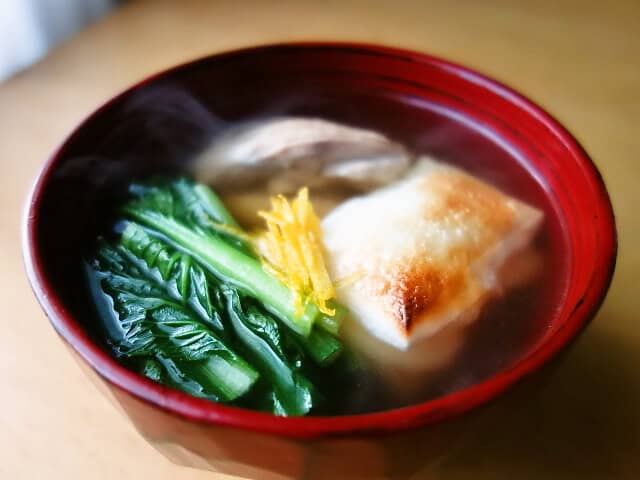
There are more than 100 types of well-known Zouni and we will get through some of them in this section.
Salmon and salmon roe (niigata – 新潟)
Characterized by salmon and salmon roe. There are also many other ingredients such as radish, carrot, burdock, and shiitake mushrooms. The rice cake is square.
Oysters and shashibashi soup stock (hiroshima – 広島)
A unique ozouni with oysters, a specialty of Hiroshima. A whole rice cake that locals haven’t baked yet. The soup is made of shashibashi.
Hakata yellowtail ozoni (fukuoka – 福岡)
Characterized by the fact that yellowtail, ara, and bonito vegetables to the clear soup of chin soup. There are also kamaboko, taro, carrots, and shiitake mushrooms. It is a not-baked round rice cake.
Okinawa style (Okinawa – 沖縄)
In Okinawa, there has been no custom of eating since ancient times. However, about 40 percent of them, doesn’t seem to have a habit of eating zouni.
Chicken stock and ozouni (Sapporo – 札幌)
In Sapporo, it is mainly chicken-based and contains roasted kakumochi. The ingredients are chicken thighs, radishes, carrots, shredded burdock, etc. It contains sugar and is a little sweet.
Miyako walnut ozouni (Miyako – 宮古)
Zouni with grilled square mochi in Niboshi soup. It is rich in ingredients and uses chicken thighs, Takano tofu, radish, carrots, burdock, salmon roe, etc. In Miyako, Iwate Prefecture, it is also customary to take out zouni mochi and dip it in sweet walnuts.
Tokyo Edo Zouni (Tokyo – 東京)
The soup stock of bonito and kelp contains roasted kakumochi. The ingredients are chicken thighs, shiitake mushrooms, Japanese mustard spinach, carrots, and trefoil. The feature is that soy sauce and mirin work well. It is also called Kanto-style ozouni, and you can eat something similar to “Tokyo Edo ozouni” in a wide area of the Kanto region.
Nagoya Zouni (Nagoya – 名古屋)
Locals soften the mochi by boiling it in bonito stock without baking. The ingredients are mochi vegetables.
White Miso Zouni (Kansai – 関西)
Made with white miso using bonito and kelp soup stock. Contains boiled round rice cakes without baking. The ingredients are taro, carrots, radishes, etc. All of these are cut into round pieces, and symbolize wishes such as “home peace” and “keep things in a circle”.
Azuki bean ozouni (Tottori – 鳥取)
Marumochi boiled in a separate pot is put in sweet bean soup. The red color of azuki beans has the power to dispel evil spirits and is auspicious.
White miso ankoro mochi ozouni (Kagawa – 香川)
Boiled ankoro mochi in iriko soup stock made with white miso. The ingredients are taro, carrots, radishes, etc. Locals melt the azuki bean from the ankoro mochi, giving it a unique taste.
Zouni Cultural Area Map

There is also a cultural area map for the different types of zouni. As a guide, the shapes you see on the map have a meaning behind them. The black square represents those areas that bake the squared mochi while the red square is for those who boiled it. On the other hand, the black circle represents those areas that bake the round mochi while the red circle boiled the round mochi. Lastly, the star represents another set that draws the distinction by using anmochi on their zouni.
The colors in the map also indicated the whole area that distinguishes these shapes. The yellow area on the map represents the kakumochi sumashi cultural area, the cream-colored area is the marumochi white miso cultural area. On the other hand, the orange is the marumochi red miso area, the violet is the azuki-jiru area, and lastly, the blue represents the marumochi sumashi area.
Zouni Recipe
Zouni Ingredients (Kanto)
| The Zouni ingredients for 2 people | |
| hot water | 350g |
| White soup stock | 22g |
| Soy sauce | 16g |
| Liquor | 10g |
| Kakumochi | 26g |
| Chicken thigh (cut into bite-sized pieces) | 100g |
| Carrot | 70g |
| Spinach | 50g |
| Kamaboko | 15g |
| Trefoil | 5g |
| Yuzu peel | 10g |
How to make Zouni?
Quickly boil spinach, drain it, and cut it to a length of 4 cm. Bake the yakimochi (square rice cake) with a net until it becomes brown on both sides. Cut the kamaboko to a width of 1 cm.
Put water in a pan and heat it. When it boils, add sake, soy sauce, chicken, and carrots, boil until the meat is cooked and the carrots are tender, and turn off the heat. Take out the carrots, cut them out with a flower pattern, and cut them into pieces.
Serve a bowl of yakimochi, spinach, kamaboko, chicken, and carrots, pour the soup, and decorate the three leaves and yuzu peel.
What is the reason for eating Zouni?
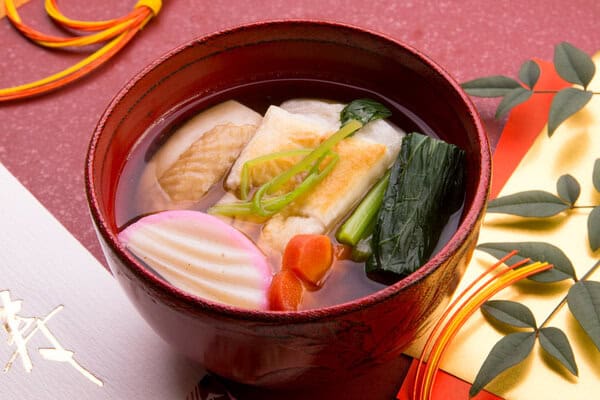
While there are other beliefs, some claim that in the past, people believed that consuming warm food and keeping the stomach warm would make the five organs, including the stomach and intestines, healthy and disease-free. On New Year’s Day, eat hot soup with mochi (rice cake) as a means of wishing for good health and happiness for the next year. On the other hand, according to one belief, during the Muromachi period (1336-1573), they serve zouni first because rice was expensive at the time, therefore the common people ate taro instead of mochi. When mochi became more attainable to the general population at the start of the Edo period (1603-1868), it was more or less always included in the zouni as a symbol of prosperity.
What does ozouni symbolizes?
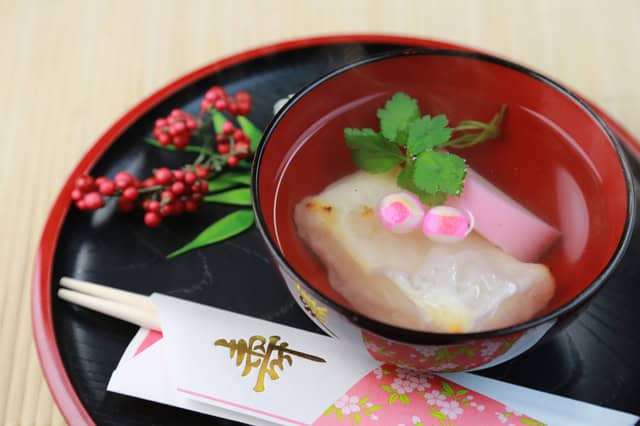
As the ozouni is a New Year’s dish, the ingredients which go into it are added for auspiciousness or have a special meaning. For example, as mochi is stretchable and can be pulled long, it represents longevity. Local produce is added to pray for a bountiful harvest in the new year.
What is the difference between Kansai and Kanto Zouni?
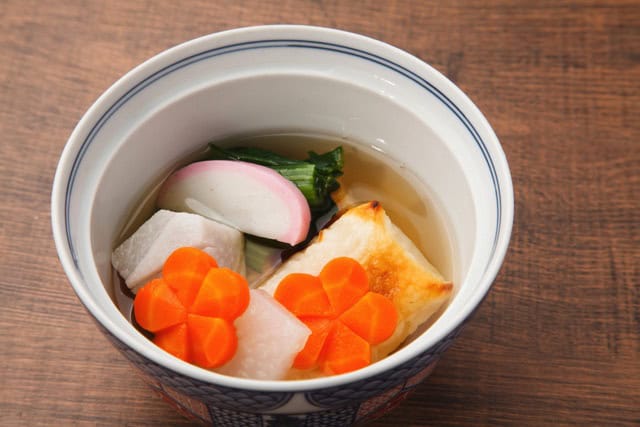
In many cases, the mochi in the Kansai ozouni uses round mochi. This seems to originate in the fact that the round shape is consider as a lucky charm that means “good luck”. Another feature of mochi is that it locals boiled it without baking. The rice cakes in the Kanto ozouni are often square-shaped rice cakes. It was during the Edo period that ozouni with mochi became available to the general public. At that time, the population is much larger in the Kanto area. The origin is that the Japanese adopted Kakumochi, which they made in large quantities at once, rather than round mochi.
Recommended Zouni Restaurants
Torii (Tokyo)
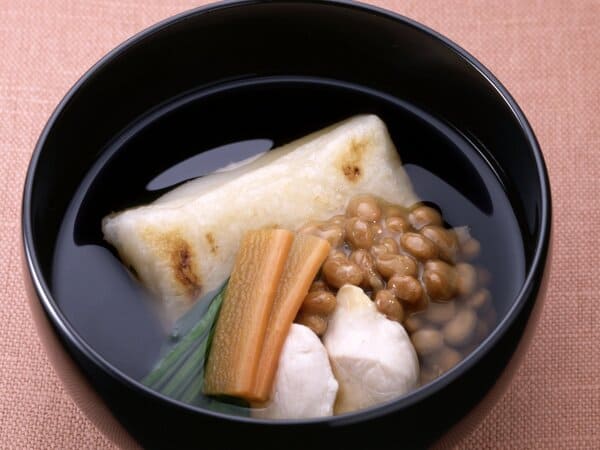
Torii is a zouni restaurant that opened in December 2009. “You can enjoy two kinds of zouni every month, “East Bowl” and “West Bowl”, and it is a small restaurant with eight seats at the counter and one table.” They serve zouni here and at the same time, they value the style of a bar where you can enjoy drinking. It is a zouni restaurant but since sake is delicious and sashimi and snacks are fulfilling, many customers recommend having a bowl of zouni at the end of the day with a beer.
Gekko (Kyoto)
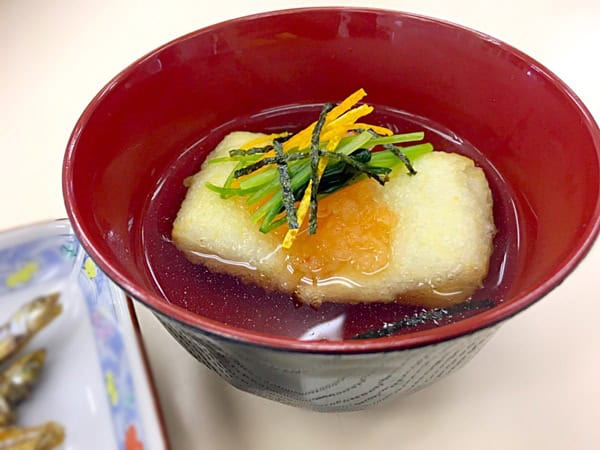
“Gekko” specializes in rice cakes and tea, and serves zouni only in winter. There are two rice cakes in the soup stock carefully taken, and the ingredients are cut into large pieces such as radish, carrot, burdock root, taro, etc., so if you eat it with rice cake, you will definitely be full.
Kinozen (Tokyo)
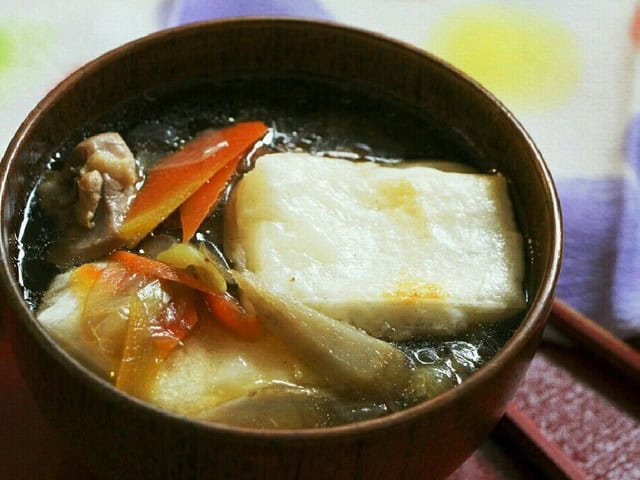
Kagurazaka’s long-favored sweet spot, Kinozen, also serves zouni for autumn and winter only. The zouni with simple soup stock is refreshing and you can eat it up easily. After eating it, you can choose from eating sweets after a meal. Many sweets are on the menu, including the famous Matcha Bavarianoa.
Mosuke Dango Toyosu Market
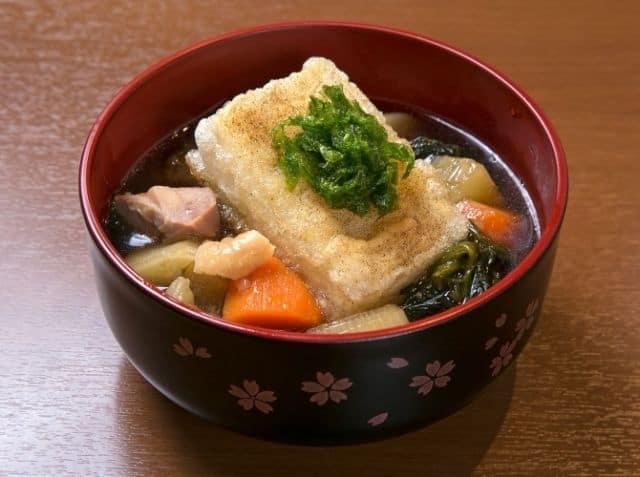
It is a two-minute walk from Yurikamome Ichimae Station, and it’s a sweet spot for Japanese sweets in Toyosu Market. At this restaurant, you can have zoni and egg zoni, which are unique to Tokyo. Yakimochi, hanpen, and soft beaten eggs are in the hot broth, which warms the body from the core when eaten, making it a perfect menu for cold weather.
Conclusion
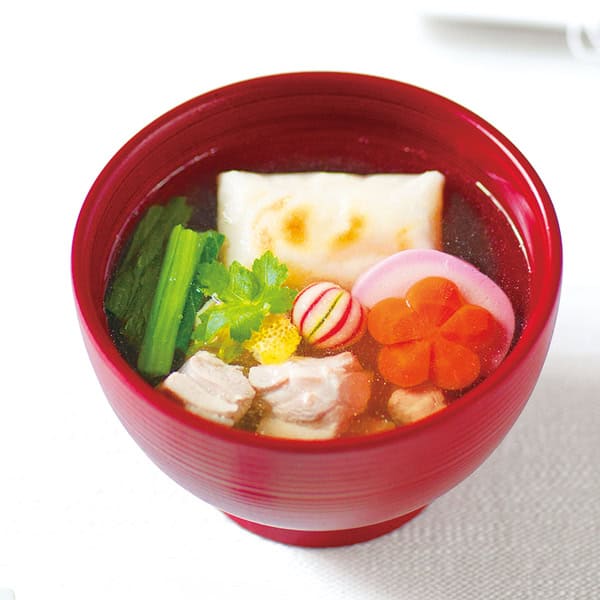
In Japan, Japanese eat zouni every year as a matter of fact, but it leads to attachment to the land where they were born and raised, and eventually to their identity as Japanese. These days, people criticized the importance of “food education”, but it is not the end if you teach it once, but by continuing to convey it every year, it remains inside the later generation’s mind without knowing it.
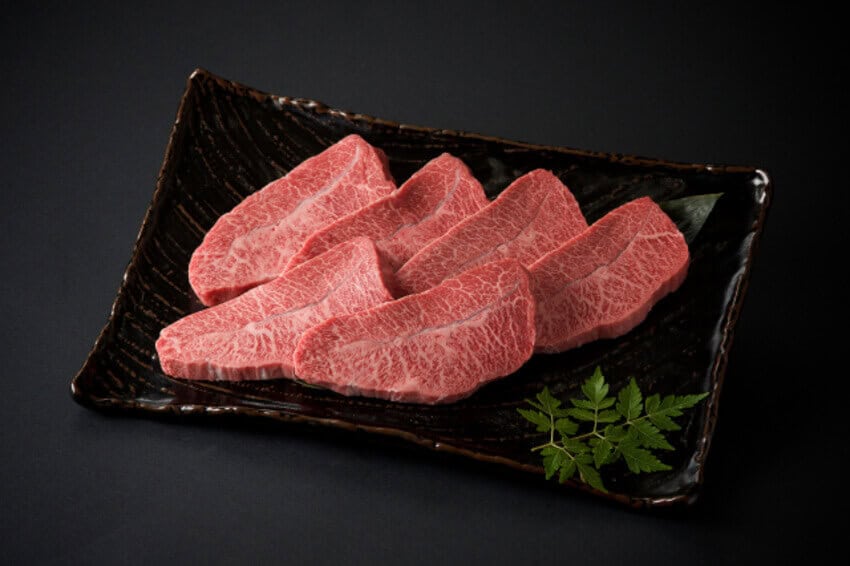
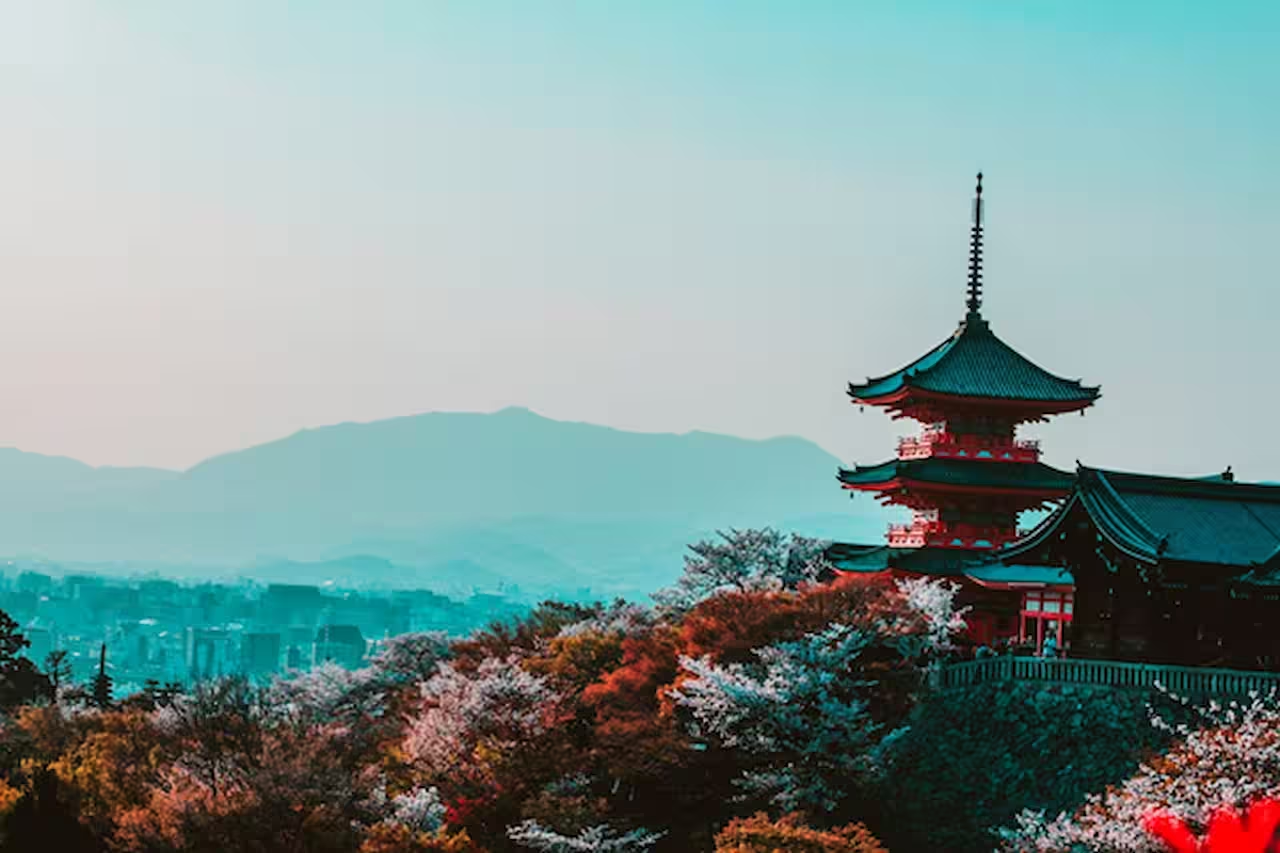
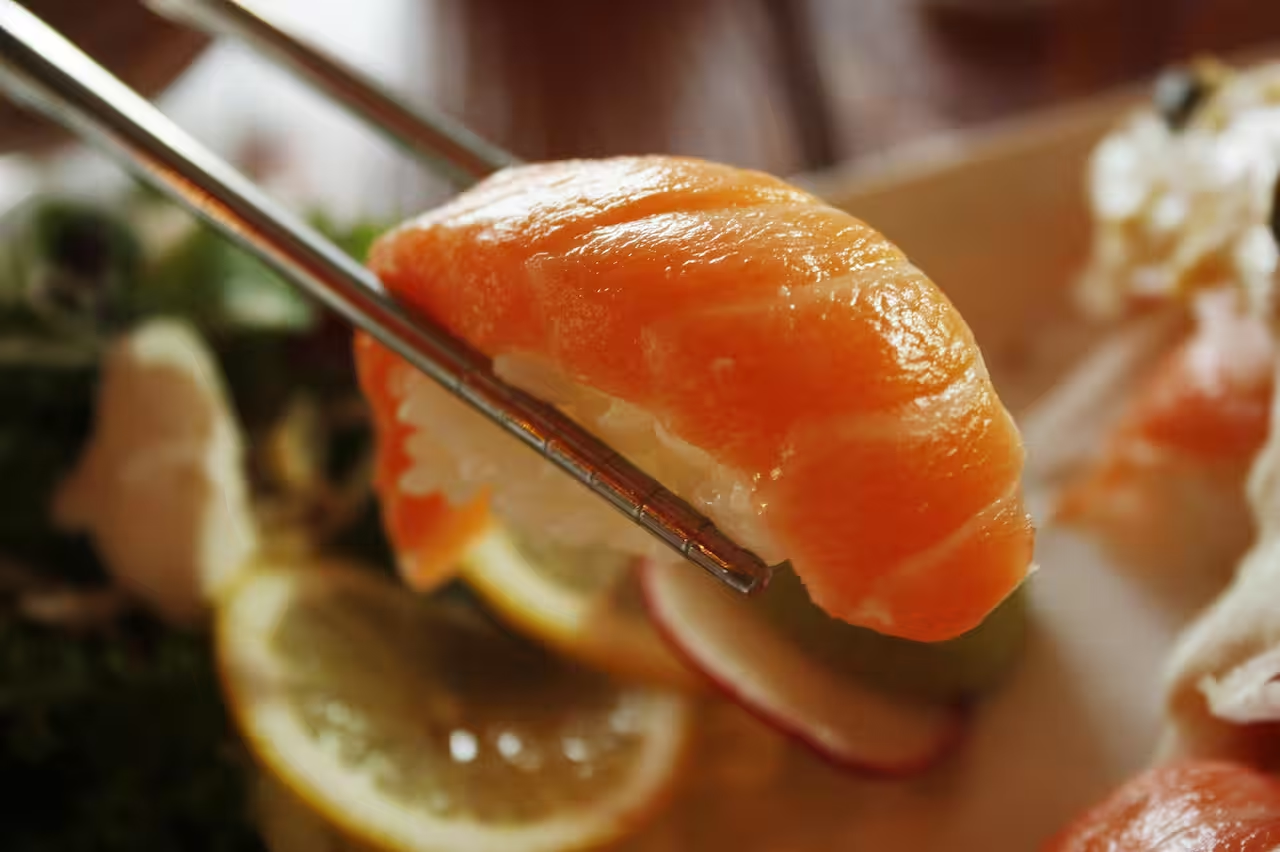
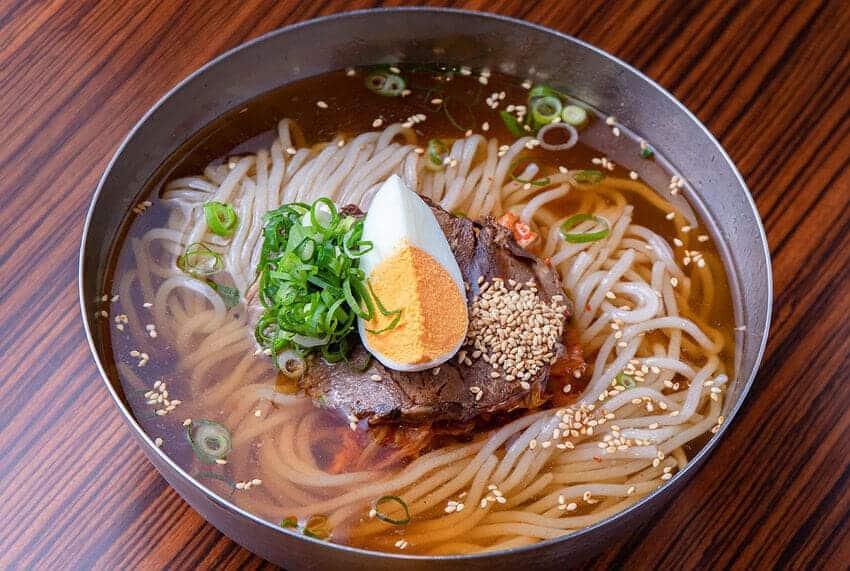
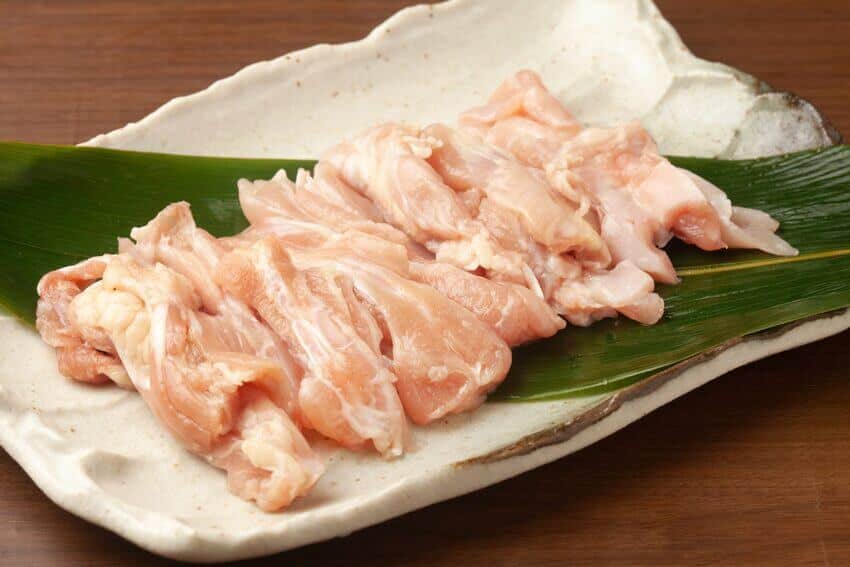

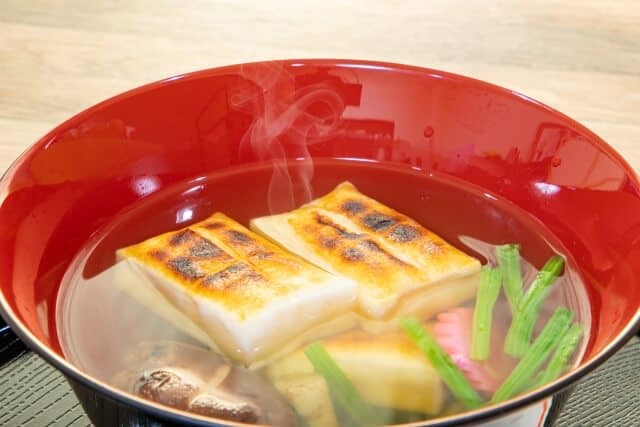
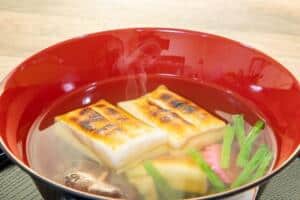
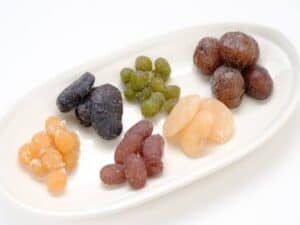
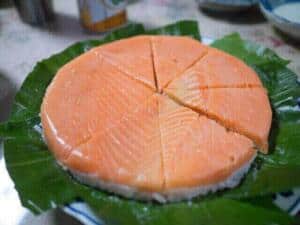
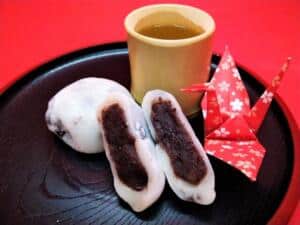
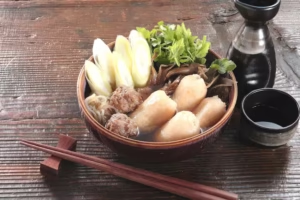
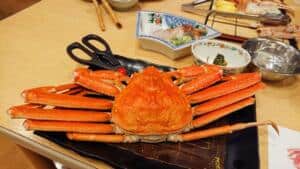
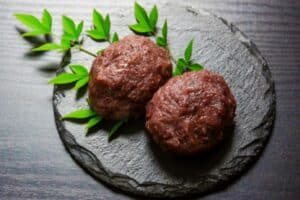
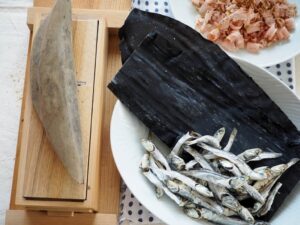
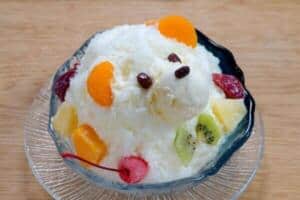
Comments